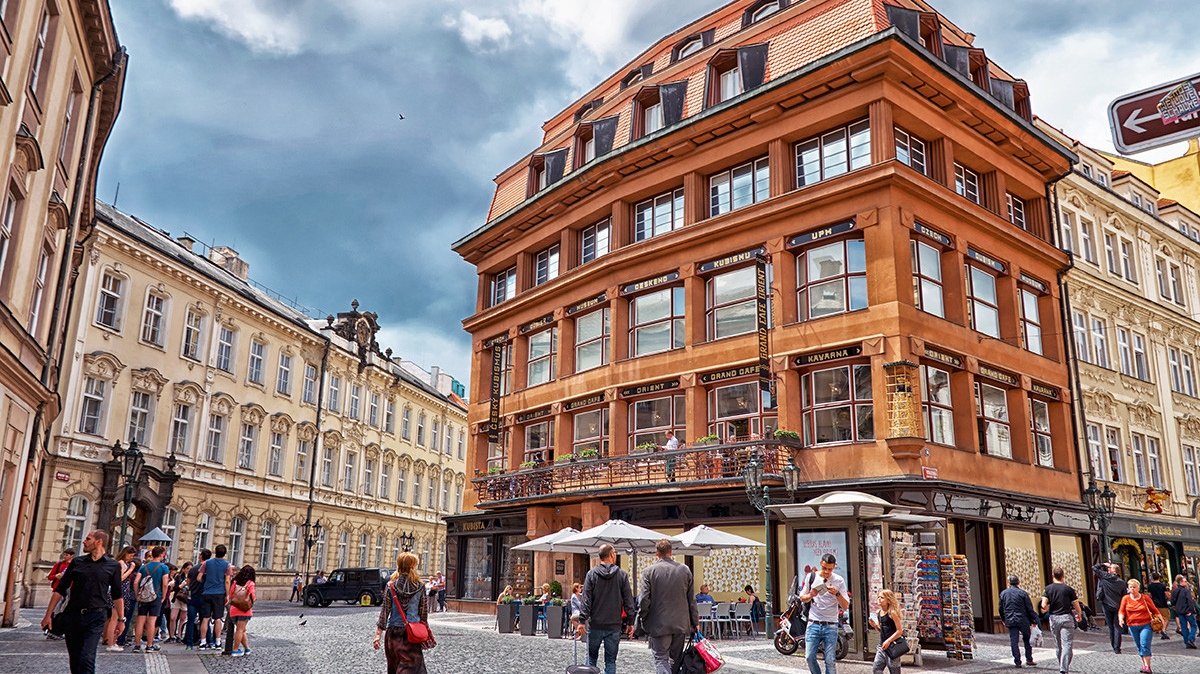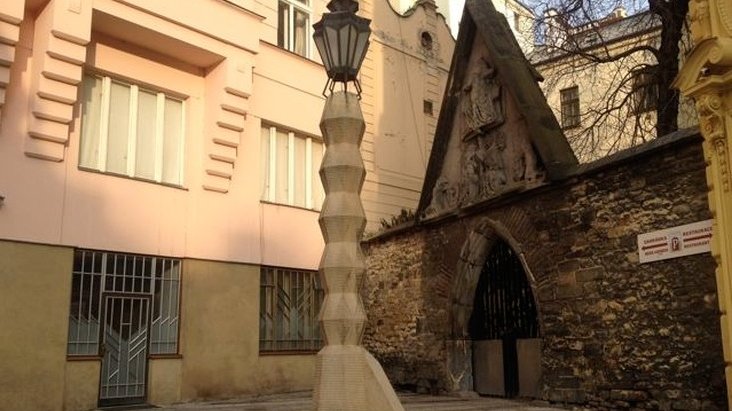It was in the 1910s and 20s that several artists embraced the principles of Cubism and applied the style to brand new forms of expression: applied art, design and, most unusually, architecture.
After the interruption by World War I, the use of Cubism in architecture dwindled, though it did manage to become the main influence for the worldwide Art Deco style of the 1920s to 30s.

The Cubists had technology on their side. Reinforced concrete was making its way into construction, and enabled them to design open floor plans without needing pillars, which can clearly be seen inside Gocar's House of the Black Madonna, where the large café space was revolutionary at the time.
Purists may complain that the principles of Cubism in painting can not be applied in spatial objects, but the resulting buildings in Prague certainly are interesting, and it’s to the architects’ merit that the striking oddness of the style still manages to surprise people nearly a century later.
Not many Cubist buildings were realised, but some striking examples can be found in and around central Prague. Start off at Josef Gocar’s 1911 masterpiece, the House at the Black Madonna (F-3, Ovocný trh 19), originally a department store and so named after the baroque statue rescued from the previous building. It’s a feat in itself that he managed to build such a revolutionary façade that somehow manages to fit in the Baroque surroundings.
Pop inside the Kubista shop on the ground floor (open 10:00 – 18:00, closed Mon, www.kubista.cz) to browse books and reproductions of Cubist applied art. Head upstairs to have a look at the Cubist spiral staircase and the beautifully reconstructed Grand Café Orient (see Cafés). The second to fourth floors of the building now house the excellent Museum of Cubism (see Sightseeing), which shows original Czech Cubist paintings, graphics (including a weird Cubist view of Prague), furniture, sculptures, and models and photographs of buildings.

Also on Jungmannovo namesti stands the huge and opulent Palac Adria (1925), a Rondocubist building which was criticized at the time for using extreme decoration for the same exact same purpose as the Art Nouveau styles that Cubism wanted to differentiate from just a decade earlier.
A short walk away at Spalena 82 (H-5, on the corner with Lazarska) stands Kralicek’s grand Diamant house, with bold rooftop sculptures, a massive doorway and attached a Cubist arch over the Baroque saint statue next door.
In 1921, Otokar Novotny constructed a complex of apartment houses on Elisky Krasnohorske 10-14 (E-1/2). Across the river in Hradcany, at Tychonova 4-6, stands another building by Josef Gocar.
Real fans can head to the northeastern suburb of Dablice, where Vlatislav Hofman’s cemetery gates are the only example of pure Cubist architecture.
South of the city centre, the Vysehrad district is the home of many Cubist buildings by Josef Chochol. There’s a space-age apartment block at Neklanova 98, the famous Kovarovicova villa at Libusina 49 and a row of Cubist buildings on Rasinovo nabrezi 42, 47 and 71.
Finally, it’s interesting to note that Czech Cubism still inspires artists – witness Karel Nepraš’ neo-Cubist sentry poles in front of the Lichtenštejnský Palace (A-2).
Convinced Cubists can visit the Cubism department on the third floor of the National Gallery (see Sightseeing) for its excellent collection of Czech Cubist art.




Comments